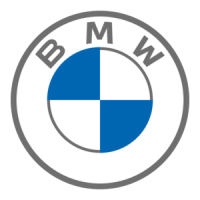32
c
da
If the screws are not marked, you will have to nd out by trial and error.
Turn one of the screws by counting the number of turns and watch the
rear derailleur. If it does not move, you are turning the wrong one. Turn
back the counted rotations to nd its original position.
Turn the screw clockwise to shift the rear derailleur towards the wheel
and anticlockwise to shift it away from the wheel.
Continue by shifting the rear derailleur to the largest sprocket. Make
sure the rear derailleur does not collide with the spokes. When the chain
runs on the largest sprocket see whether you can shift the rear derailleur
even further by moving the shifting lever to the end of its travel. Then
press the rear derailleur further towards the spokes by hand (b). Spin
the wheel. If the derailleur cage moves towards the spokes or if the chain
begins to move beyond the largest sprocket, the derailleur movement
range needs to be limited. Turn the limit screw marked “L” clockwise
until the rear derailleur is clear of the spokes.
Be sure to go on a test ride in a place free of trafc, after adjust-
ing the gears of your bicycle.
Improperly adjusted limit stops or a bent rear derailleur mount
can result in a severe damage to the bicycle and a rear wheel
blocking. Risk of accident!
6.3.3 Front Derailleur.
The range within which the front derailleur (c) keeps the chain on the
chainring without itself touching the chain is very small. This adjustment
is a job best left to your BMW partner or a bicycle specialist shop of your
trust.
It is often better to let the chain drag slightly on the derailleur than to risk
having the chain fall off the chainring, which would interrupt the power
train. The front derailleur, just like the rear derailleur, has limit screws
marked “H” and “L” that reduce the movement range.
As with the rear derailleur, the cable of the front derailleur is subject to
lengthening and hence to reduced precision in gear changing.
If necessary, shift to the small chainring and increase the tension of the
Bowden cable by turning the adjusting bolt through which it passes at
the entry to the gear shifter (d) or at the frame under the down tube.
Always check after an accident whether the guide plates of the
front derailleur are still parallel to the chainrings!
Adjusting the front derailleur is a very delicate job. Improper ad-
justment can cause the chain to jump off, thus interrupting the
power train. Risk of accident!
Be sure to go on a test ride in a place free of trafc, after adjust-
ing the gears of your bicycle.
b

